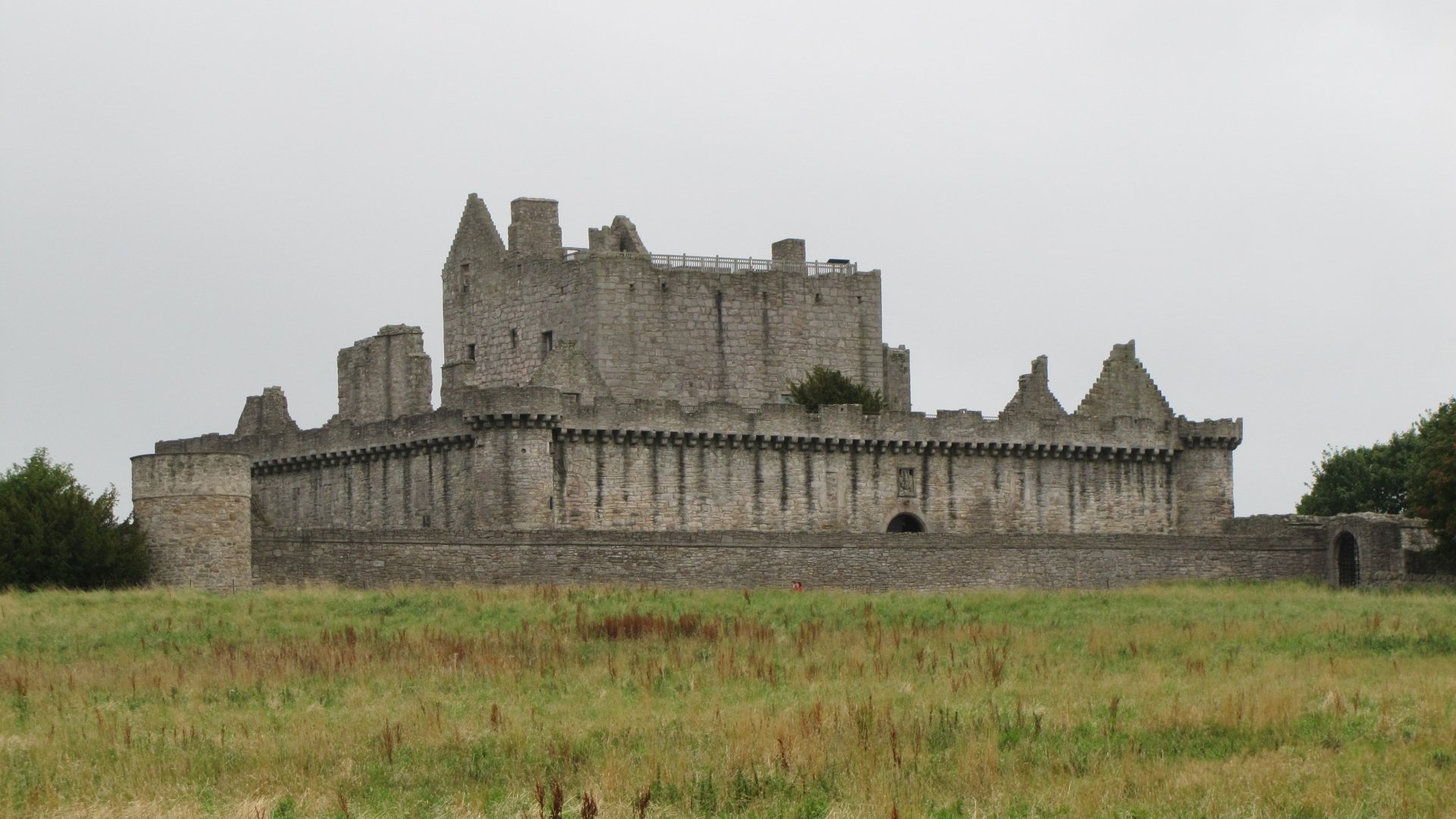Craigmillar

The lands of Craigmillar were granted to the
monks of Dunfermline abbey by King David I (d.1153). Some 200 years
later
in 1342, the Preston
family were granted land in the area by King David II
(d.1371). This gave them 2/3rds of the estate before the rest
of
the land was granted by King Robert II (d.1390) to Sheriff Simon
Preston of
Midlothian in 1374. It would seem either one of the early
Prestons, the sheriff or another Simon Preston his son, or his
grandson, George Preston,
began work on the tower house which now forms the core of the
castle. Certainly the castle was standing by 1425
when a charter was sealed at Craigmillar by John Preston. It
is
thought the courtyard wall was added by William Preston (d.1453) who
drew on his continental travels for inspiration in the new
Craigmillar work. In the late 1470s, Earl John
Stewart of Mar, brother of King
James III (1460-88), was held prisoner at Craigmillar, accused of practising
witchcraft against the king and died there
in suspicious
circumstances in 1479.
In 1511 Craigmillar was made a barony. It is thought the
outer
courtyard was built around this time, allegedly by Simon Preston
(d.1520), the member of Parliament for
Edinburgh in 1487, who had succeeded to the castle in 1478.
In September 1517, during an outbreak of plague in Edinburgh, the
infant James V of Scotland was moved to safety at
Craigmillar. His
French guardian, De la Bastie, had new locks made for his chamber and
added two iron gates as well as a stable for the king's mule.
The
family chapel within the outer court was first recorded in
1523.
In 1544, during the so-called Rough Wooing of Henry VIII (d.1547),
the English, under the Earl of Hertford, burned the castle. Afterwards,
Simon Preston (d.1569) had the castle repaired, with domestic ranges in
the courtyard being remodelled. Simon served as Lord Provost
of
Edinburgh for several years, and was a loyal supporter of Mary Queen of Scots (1542-67),
who appointed him to her Privy Council.
Queen Mary stayed at Craigmillar twice, in September
1563 and from 20 November to 7 December 1566. She is
traditionally said to have slept in the small former kitchen within the
tower house, although it is more likely that she occupied larger
accommodation in the relatively new east range. On her second
stay, Mary was still in poor health following a serious illness in
October. Several of her noblemen were with her, and suggested
to
her that her unpopular husband, Henry Stuart, Lord Darnley, could be
removed, either by divorce or by other means. An agreement,
the 'Craigmillar Bond', was signed by Mary's Secretary of State William
Maitland of Lethington, and several nobles including the earls of
Bothwell, Argyll and Huntly. The bond does
not survive, but set
out the conspirator's intent to remove Darnley. Although Mary
made it clear that she was unhappy with Darnley, it is claimed that she
was not part of the conspiracy, and was probably unaware of the plot to
kill her husband. It was initially intended that Darnley
would
lodge at Craigmillar when he returned to Edinburgh, although he opted
to stay at Kirk o' Field in the town, where he was murdered on 10
February 1567. In 1572, after Queen Mary's flight into
England,
the Regent Mar used Craigmillar as a base during his siege of Edinburgh
castle, which was being held by supporters of the exiled
Queen.
King James VI (1567-1625) was the guest
of David Preston at
Craigmillar in 1589.
On the death of Robert Preston in 1639, Craigmillar
passed to a distant cousin, David Preston of Whitehill. His
son
sold the castle to the Royalist, John Gilmour (d.1671), in 1660.
The castle was abandoned in the early eighteenth century and
was ruined by 1775,
when the antiquarian and poet John Pinkerton wrote Craigmillar Castle:
an Elegy.
Description
At the core of Craigmillar castle is a fourteenth century L plan tower
house,
built on a rocky outcrop. Wrapped around this on 3 sides is a fifteenth
century courtyard
wall, with ranges of buildings at the south-east, east and west and round towers on the corners. Beyond
this ward is a lower outer wall, enclosing a broad outer
courtyard.
This contained gardens and a chapel. Further gardens lay to
the
south, where the outline of a fish pond can be seen.
Why not join me at
Craigmillar and other
Great Scottish Castles this Spring?
Information on tours at Scholarly
Sojourns.
Copyright©2019
Paul Martin Remfry
